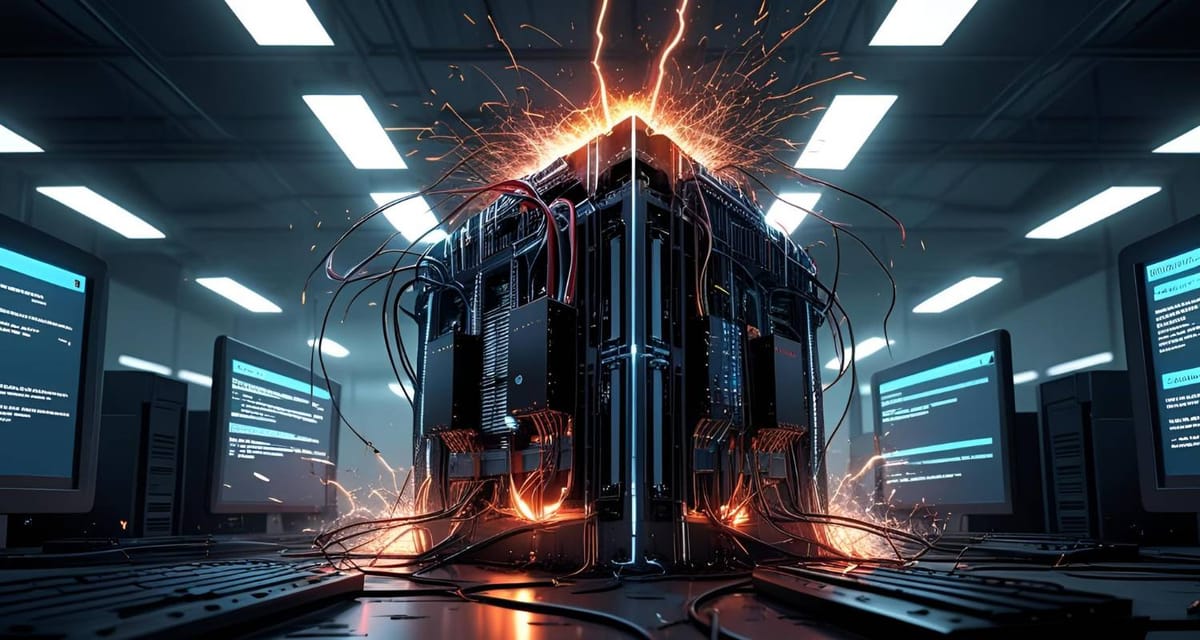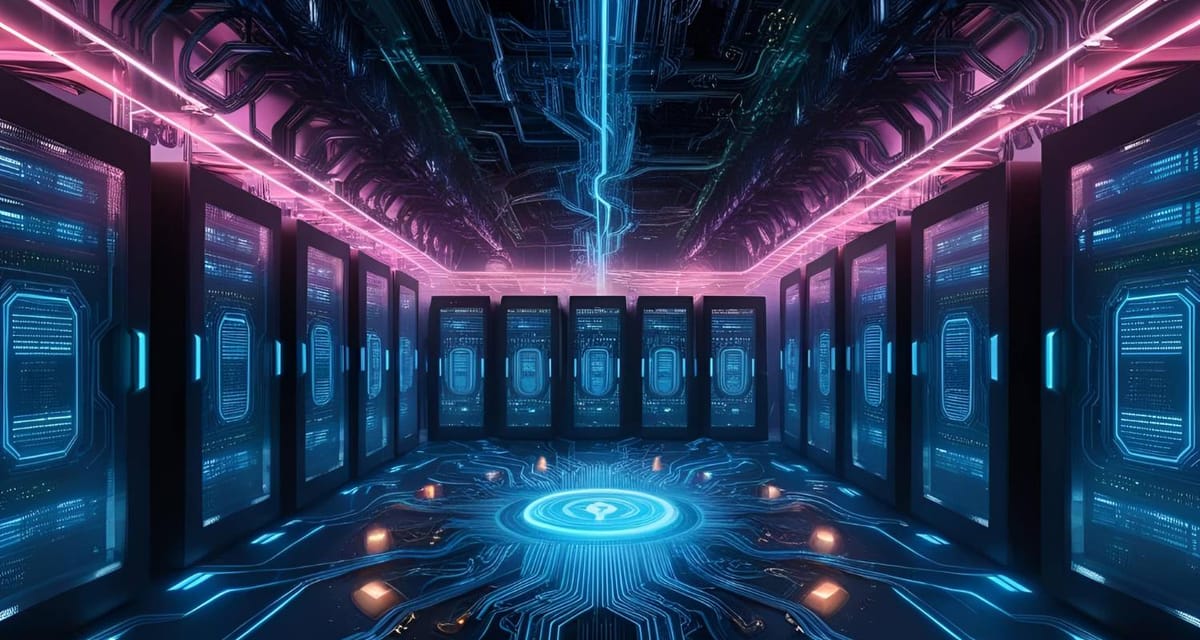Gradient Starvation. Why Your LLM Stops Learning
Gradient starvation is a hidden failure mode in machine learning where frequent tokens dominate training, starving rare and informative tokens of updates.

TL;DR
Gradient starvation happens when the common tokens in your dataset hog all the learning signal, starving the rarer, but often more informative tokens of gradient updates. Left unchecked, it’s one of the stealth culprits behind bland responses, factual drift, and the “my‑model‑seems‑dumber” than yesterday vibe.
Wait, What Is Gradient Starvation?
First coined in a 2020 DeepMind research note, gradient starvation describes a feedback loop inside a neural net’s loss function:
- Frequent tokens dominate the probability mass.
- Those tokens produce the largest gradients.
- The optimizer adjusts weights to reduce that loss, mostly for the frequent tokens.
- Rare tokens get almost no weight updates ➜ they remain poorly modeled.
- Rinse and repeat.
In plain English
Your model over‑learns “the” and “is,” while under‑learning “quark,” “epigram,” or “Gradient Starvation” itself. The rich get richer; the rare stay rare.
Sound familiar? This is the micro‑scale cousin of “Habsburg AI,” where quality erodes under self‑generated data:

2. Why Should You Care?
| Pain Point | How Gradient Starvation Shows Up |
|---|---|
| Boring outputs | High‑probability phrases crowd out nuance, so answers start to sound like wallpaper text. |
| Hallucination spikes | Rare factual tokens are under‑trained; when the model reaches for them, it just guesses. |
| Runaway RLHF | Reinforcement‑learning fine‑tuning magnifies the already‑dominant gradients, accelerating collapse. |
| Production drift | As user queries drift into the long‑tail, the model exposes gaps it never truly learned. |
In short, gradient starvation is a first‑principles explanation for why even premium LLMs sometimes feel like they’re “getting worse.” over time
It dovetails with phenomena like Model Autophagy Disorder and Jevons‑style over‑consumption of computing resources.
How Does It Happen?
- Zipf’s Law in Text
Natural language is immensely imbalanced; 20 % of tokens account for ~80 % of occurrences. - High Learning Rates
Aggressive schedules magnify large gradients first, locking in majority‑token weights. - Oversized Batch Norms / LayerNorms
They normalize activations around frequent patterns, pushing rare‑token signals toward zero. - Unbalanced Fine‑Tuning
When you RLHF on crowd‑sourced chat data, you widen the gap: “Sure,” “Absolutely,” and “Here’s the answer” get jet‑fuel; “gluconeogenesis” starves.
A Quick Visualization 📈
(Imaginary but realistic)
| Epoch | Loss on Frequent Tokens | Loss on Rare Tokens |
|---|---|---|
| 0 | 2.30 | 2.30 |
| 1 | 1.20 (↓48 %) | 2.10 (↓9 %) |
| 3 | 0.85 (↓29 %) | 1.95 (↓7 %) |
| 10 | 0.60 (↓29 %) | 1.90 (↓2 %) |
By epoch 10, gradients for rare tokens are tiny, but the optimization basically gave up.
Where Gradient Starvation Meets the Real World
- Chatbots repeating generic advice
(“Remember to eat healthy!”) because the rare domain‑specific nouns never got trained. - Medical LLMs misclassifying uncommon drug names.
- Code models autocompleting boilerplate but bombing on infrequent API calls.
These aren’t just annoyances—they’re failure modes with reputational and regulatory fallout.
The Bigger Picture
Gradient starvation is another piece in the puzzle of why “just scale it” hits diminishing returns and why reasoning‑focused training is hot again. Keep an eye on:
- Sparse mixture‑of‑experts that route rare tokens to specialist sub‑nets.
- Retrieval‑augmented generation (RAG) pipelines ensure rare context is fetched from external sources.
- Next‑gen optimizers that dynamically adjust learning rates per token frequency.
If you like these deep dives, our recent post on AI data‑center startups shows who’s building the hardware to tackle exactly these scaling issues:

Key Takeaways 🔑
- Gradient starvation = rare tokens get few updates ➜ poor performance.
- It’s intertwined with Habsburg AI decay, model autophagy, and Goodhart loops.
- Mitigation is possible—balanced sampling and smarter optimization go a long way.
- Understanding it is non‑optional if you care about quality over sheer parameter count.
Who’s Really Fighting Gradient Starvation Today?
Right now, there isn’t (yet) a pure‑play “Gradient‑Starvation‑as‑a‑Service” startup.
The pain‑point lives mostly in research papers and in the knobs that larger training‑efficiency vendors bake into their tool‑chains.
| Company / Project | What They Sell | How It Mitigates Starving Gradients |
|---|---|---|
| MosaicML → Databricks Mosaic AI | Composer library + “batteries‑included” training recipes | Algo‑zoo tricks (Layer‑Freeze, Grad‑Accum, Progressive Resizing) keep gradients alive in very deep nets. |
| Deci AI | AutoNAC model‑compression & inference runtime | Searches for architectures that preserve representation overlap, sidestepping collapse & class‑imbalance. |
| Modular / Mojo | Compiler + runtime for graph‑level scheduling | Lets you hot‑swap per‑layer precision / LR schedules—classic starvation counter‑measures for giant LLMs. |
| Microsoft DeepSpeed | ZeRO & ZeRO‑3 optimizer stack | Per‑parameter adaptive scaling dulls the “rich‑get‑richer” gradient spiral linked to starvation. |
| NVIDIA TensorRT‑LLM | Kernel‑level optimizer & quantizer | Mixed‑precision + per‑channel QAT that keeps gradient signal intact in ultra‑wide transformer blocks. |
Why are there no standalone “Gradient Starvation” companies yet?
- Niche vs. Platform – Buyers usually want a full training‑efficiency stack (compilers, schedulers, fault tolerance), not a single knob that fixes one pathology.
- Research is still moving – Solutions are optimizer‑level tweaks that the big frameworks (PyTorch 2.x, JAX, DeepSpeed) can absorb quickly.
- GPU scarcity dominates – Teams focus first on getting any H100s, then on wringing 10‑20 % extra utilization; starvation fixes come along for free in newer libs.
🚀 Stay in the Loop
We unpack topics like this every week in our AI Funding newsletter, plus new funding rounds, investor heatmaps, and emerging research you won’t find on TechCrunch.
👉 Subscribe here (it’s free) and join thousands of AI founders, VCs, and builders.





